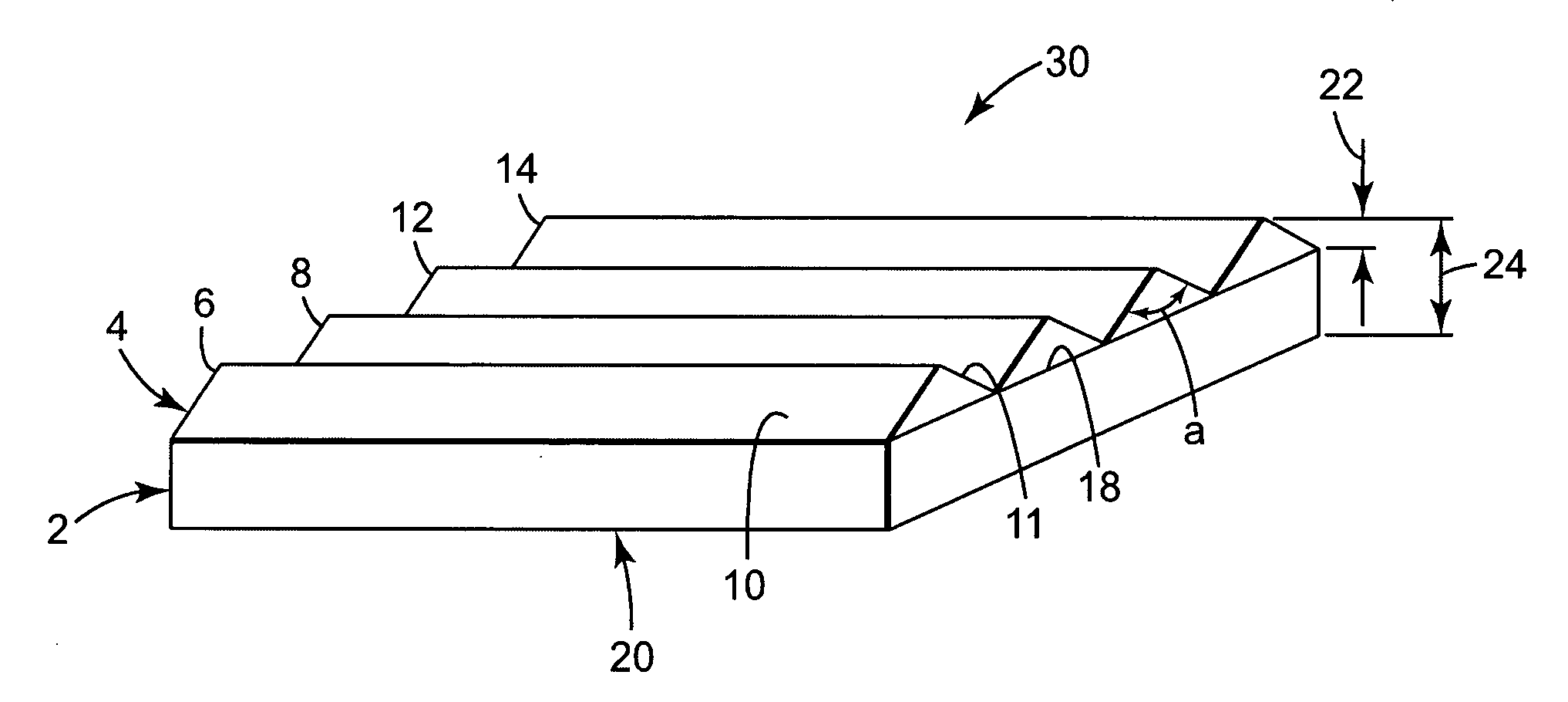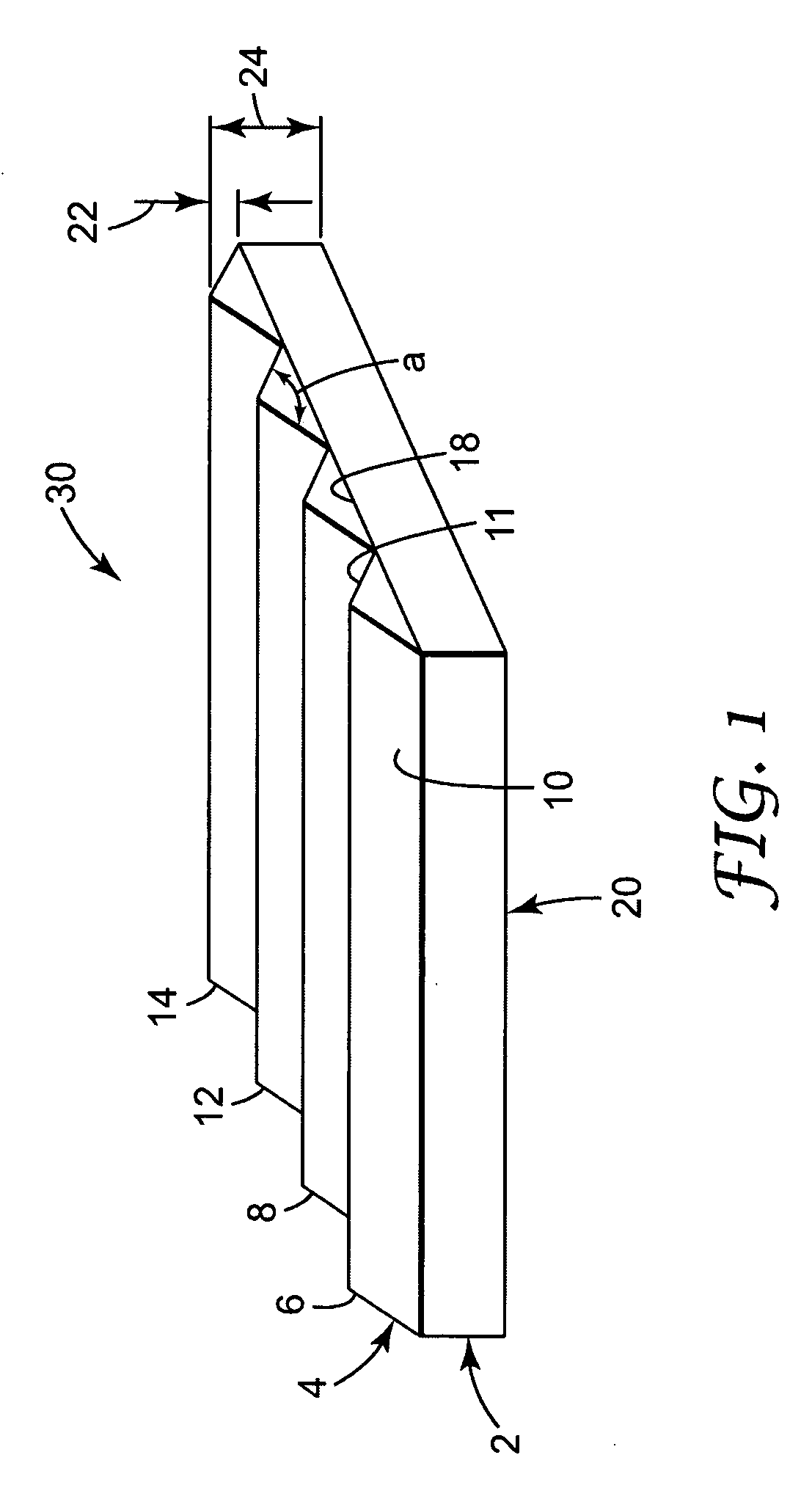Optical film assembly and display device
a technology of optical film and display device, which is applied in the field of optical film assembly and display device, can solve the problems of affecting the performance of the film, the inability to provide the benefit of higher-index materials, and the inability to achieve the benefit of more than 5 wt-%, and achieves the effect of low absorban
- Summary
- Abstract
- Description
- Claims
- Application Information
AI Technical Summary
Benefits of technology
Problems solved by technology
Method used
Image
Examples
examples
Refractive Index of the Polymerizable Compositions was Determined with a Fischer Scientific Refractometer Co. Model # 6208.
Gain Test Method
[0130]Optical performance of the films was measured using a SpectraScan™ PR-650 SpectraColorimeter with an MS-75 lens, available from Photo Research, Inc, Chatsworth, Calif. The films were placed on top of a diffusely transmissive hollow light box. The diffuse transmission and reflection of the light box can be described as Lambertian. The light box was a six-sided hollow cube measuring approximately 12.5 cm×12.5 cm×11.5 cm (L×W×H) made from diffuse PTFE plates of ˜6 mm thickness. One face of the box is chosen as the sample surface. The hollow light box had a diffuse reflectance of ˜0.83 measured at the sample surface (e.g. ˜83%, averaged over the 400-700 nm wavelength range, measurement method described below). During the gain test, the box is illuminated from within through a ˜1 cm circular hole in the bottom of the box (opposite the sample sur...
example 65
Display Device Example 65
[0162]The assembly of Example 20 (i.e. a crossed sheet pair of substantially non-polarizing microstructured optical films prepared from a polymerizable resin having a refractive index of 1.6525) was compared to a crossed sheet pair of commercially available brightness enhancing films commercially available from 3M Company, St. Paul, Minn. under the trade designation “Vikuiti BEF-II 90 / 50” in a LCD display.
[0163]The LCD module includes a CCFL light source, a wedge-shaped light-guide with a dot extraction pattern, a multi-layer polymeric specular back-reflector behind the light-guide (sold by 3M Company, St. Paul, Minn. under the trade designation ESR [Enhanced Specular Reflector]), a diffusing film in front of the light guide, the assembly of crossed sheet brightness enhancement films in front of the diffusing film, a diffusing cover sheet in front of the BEF II sheets, and lastly a twisted nematic liquid crystal panel having absorbing polarizers on its outer...
PUM
| Property | Measurement | Unit |
|---|---|---|
| refractive index | aaaaa | aaaaa |
| refractive index | aaaaa | aaaaa |
| thickness | aaaaa | aaaaa |
Abstract
Description
Claims
Application Information
 Login to View More
Login to View More - R&D
- Intellectual Property
- Life Sciences
- Materials
- Tech Scout
- Unparalleled Data Quality
- Higher Quality Content
- 60% Fewer Hallucinations
Browse by: Latest US Patents, China's latest patents, Technical Efficacy Thesaurus, Application Domain, Technology Topic, Popular Technical Reports.
© 2025 PatSnap. All rights reserved.Legal|Privacy policy|Modern Slavery Act Transparency Statement|Sitemap|About US| Contact US: help@patsnap.com



